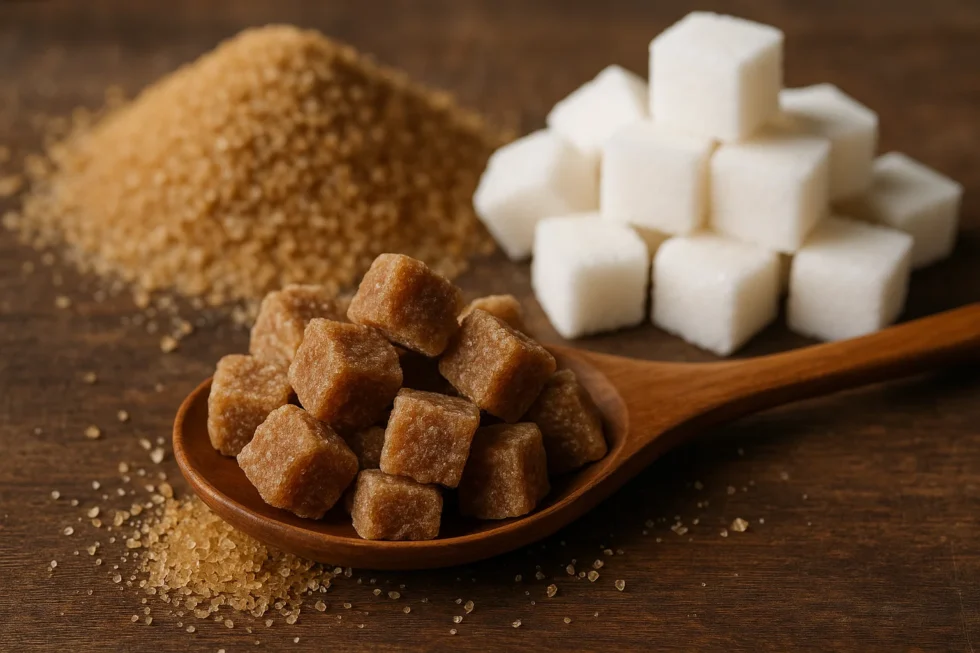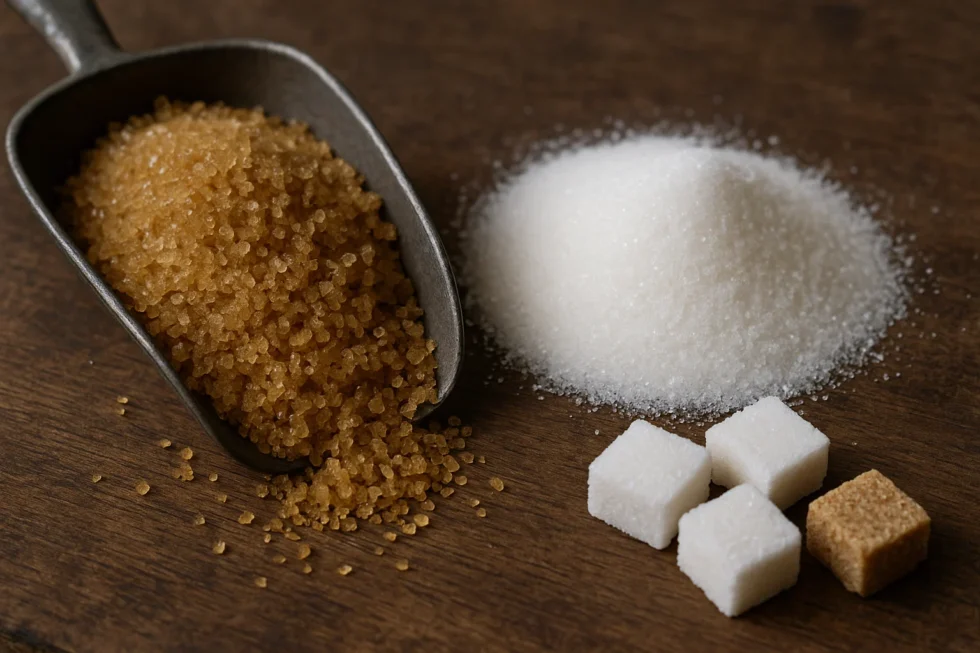What makes brown sugar healthier than white – or is too much daily intake the bigger risk

Sugar is everywhere – in our coffee, our breakfast cereals and our snacks. But not all sugar looks the same, and many people believe that the color makes the difference. White and brown sugar may come from the same plants, yet they differ significantly in how they are processed and used. White sugar is fully refined and stripped of molasses, while brown sugar retains or is enriched with it, giving a darker color and caramel-like taste. The assumption that brown sugar is automatically healthier is widespread, but experts strongly disagree. The real differences lie in texture, taste and culinary application, not in health benefits. For bakers and everyday consumers, the choice is often about flavor rather than wellness – reports G.Business.
Details and facts:
- White sugar: highly refined, almost pure sucrose, neutral taste.
- Brown sugar: contains molasses, adds caramel flavor and moisture.
- In baking: white sugar works for light cakes and drinks, brown sugar for cookies and sauces.
- Industry: much “brown sugar” is white sugar with added molasses.
- Calories: both types have almost identical calorie counts.
Health impacts of sugar in 2025
Both white and brown sugar are considered “fast carbohydrates” that rapidly increase blood glucose levels. Regular overconsumption can raise the risk of type 2 diabetes, cardiovascular disease, obesity, and hypertension. Brown sugar does contain small amounts of minerals such as calcium, magnesium, potassium and iron, but in such tiny amounts that they provide no real health benefit. A teaspoon of brown sugar provides less than 1% of the daily requirement for minerals. Experts emphasize that it is the total sugar intake that matters, not the type of sugar consumed.
Statistics & tips:
- Average 2025: adults in Germany consume about 90 g sugar daily.
- WHO recommendation: no more than 25–50 g per day.
- Minerals: negligible in brown sugar, none in white sugar.
- Risks: obesity, tooth decay, diabetes, high blood pressure.
- Tip: reduce sugar in tea/coffee, don’t add it automatically.
Sugar consumption in Germany – facts and figures
Germany remains one of the highest sugar-consuming nations. In 2025, per capita consumption was around 31 kilograms per year. Children and adolescents consume even more sugar than adults due to hidden sugars in processed foods and beverages. According to the Robert Koch Institute, 18% of German adults are obese in 2025, compared to 15% in 2020 – a clear connection to excess sugar consumption. This highlights that the debate over white versus brown sugar is only part of the larger issue.
Table 2025:
| Category | WHO recommendation | Germany 2025 |
|---|---|---|
| Daily sugar intake | max. 50 g | ~90 g |
| Annual per capita use | 18 kg | 31 kg |
| Obesity rate | < 15 % | 18 % |
Examples & advice:
- A single soft drink contains up to 7 teaspoons of sugar.
- Breakfast cereals often have more sugar than desserts.
- Yogurts can contain twice the recommended daily amount.
- Check ingredient lists: sugar hides under names like glucose syrup, maltodextrin, fructose.
Practical alternatives to sugar in everyday life
Consumers in 2025 have more options to reduce sugar intake without sacrificing sweetness. Natural alternatives such as honey, maple syrup or coconut sugar are popular, but they are still calorie-heavy. Stevia, on the other hand, is calorie-free and suitable for drinks. Nutritionists warn that alternatives are not automatically “healthy” – moderation remains essential. The most effective strategy is to gradually train your taste buds to prefer less sweetness.
Tips & examples:
- Reduce: cut sugar in recipes by one-third.
- Stevia: plant-based, no calories, good for coffee/tea.
- Honey: contains enzymes, but still adds calories.
- Maple syrup: flavorful but energy-dense.
- Daily habit: drink water instead of soft drinks, unsweetened tea instead of juice.
Conclusion: Which sugar is really better

When it comes to health, the debate between white and brown sugar is shaped more by consumer perception than by real nutritional differences. Both types deliver quick energy in the form of simple carbohydrates but lack essential vitamins or minerals in meaningful amounts. While brown sugar retains traces of molasses with minimal calcium or potassium, the levels are far too small to make a real difference in diet. Nutritionists emphasize that what matters is not whether sugar is white or brown, but the total daily intake. In other words: it is quantity, not color, that defines health impact.
Key arguments and advice:
- Nutrient value: Brown sugar contains trace minerals, but too little to benefit health.
- Calories: Both types have nearly identical calorie content.
- Health risks: Excess sugar increases risks of obesity, diabetes, and heart disease.
- Consumer myth: Many believe brown sugar is “healthier,” but science does not support this.
- Best strategy: Reduce total sugar intake rather than focusing on type.
White and brown sugar are nutritionally almost the same. The real choice is not about color, but about conscious limits and healthier habits. Those who cut back on sugar, replace sweetened drinks with water, and use natural alternatives in moderation will gain the most long-term health benefits.
Stay connected for news that works — timely, factual, and free from opinion — and insights that matter now: Papaya and Its Seeds – A Tropical Superfruit with Dual Powers

